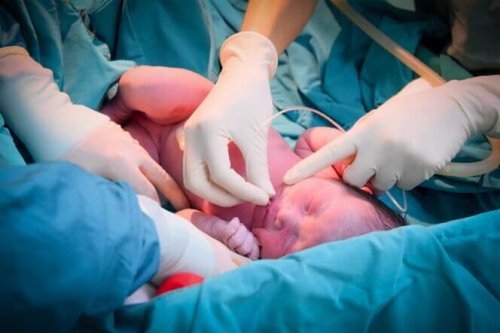Risk Factors of Perinatal Asphyxia

Perinatal asphyxia is when a newborn baby lacks oxygen. This can inevitably lead to death. Perinatal asphyxia can occur before, during, or after childbirth and for various reasons.
According to data from a recent study, approximately 20% of the babies who suffer from perinatal asphyxia die, and those who survive usually have permanent neurological problems.
There are numerous situations that can cause problems with a newborn baby. These problems can occur before, during, or after the baby is born.
This article will focus on exploring the latest research on this topic.
One of the Main Causes of Neonatal Death

The World Health Organization (WHO) includes neonatal asphyxia as one of the leading causes of death in newborns.
Oftentimes, during delivery, doctors will notice that the baby lacks oxygen if the newborn does not cry or move. Another sign of neonatal asphyxia in a newborn is that the baby’s body is limp.
In either situation, doctors must act as quickly as possible. Doctors must monitor the situation carefully and try to determine what caused the asphyxia to be able to come up with the best solution.
A baby that suffers from a lack of oxygen before delivery may require an emergency cesarean section.
What Causes Perinatal Asphyxia?
Perinatal asphyxia can be caused by several different factors, and these may differ depending on if the asphyxia occurs before, during, or after birth.
Perinatal Asphyxia before Childbirth
This type of asphyxia can occur during any month of the pregnancy, although it most commonly happens closer to the due date of the baby.
This is why routine medical appointments are important to check that everything is going well for both the baby and the mother. Some of the factors that may cause perinatal asphyxia include:
- The mother’s anemia
- Bleeding during pregnancy
- Improper positioning of the baby’s head
- Prolonged pregnancy (more than 42 weeks)
- Infection contracted by the mother.
Also read: The Best Remedies to Treat Anemia During Pregnancy
During Birth
During childbirth, certain dangerous situations may arise. Although doctors are prepared to deal with any circumstance, it’s important to know what can happen in extreme cases:
- The umbilical cord wraps around the baby’s neck or becomes compressed at some point
- Preeclampsia that increases the mother’s blood pressure
- A respiratory problem for the mother
- The use of forceps during birth
- Labor that is longer than it should be.
After Birth

Despite already going through labor, the risk of suffering from perinatal asphyxia can be present even after childbirth. Causes include:
- Premature birth, since a premature baby’s organs are not strong
- Congenital malformation
- Lung or heart disease
- Severely underweight babies.
Normally, if a baby suffers from mild asphyxia, they cry too much, are irritable, and have a more pronounced muscle tone. However, this generally does not last longer than one day.
On the other hand, if the situation is more severe, the newborn may convulse, lack the sucking reflex necessary for breastfeeding, and have very low muscle tone.
Discover: Illnesses During Pregnancy that Every Woman Should Know About
Neurological Damage
How quickly the perinatal asphyxia was treated and whether it caused the newborn to have seizures greatly affects the likelihood of the baby suffering from any neurological damage.
Neurological damage generally occurs if the baby had any type of convulsions or seizures, if the asphyxia continued for a prolonged period of time, or if other factors are added. For example, the risk of suffering from neurological damage is high if the baby has any sort of cardiovascular or pulmonary system failure.
Another factor that can increase the chances of neurological damage is if the newborn has acidosis, which is when too much acid accumulates in the blood.
Due to the careful monitoring during pregnancy, many factors that cause perinatal asphyxia can be prevented. However, there are some circumstances that are uncontrollable.
While some situations are out of our control, having qualified and attentive personnel before and during birth who are experienced and familiar with the various situations that could occur is essential for any successful pregnancy. Perinatal asphyxia can be fatal, so every precaution is necessary.
All cited sources were thoroughly reviewed by our team to ensure their quality, reliability, currency, and validity. The bibliography of this article was considered reliable and of academic or scientific accuracy.
- Borrero, J. C. M., Ortega, L. R., Alba, M. P., Duvergel, R. D., & Chacón, M. C. (2013). Algunos factores perinatales relacionados con la asfixia neonatal. Medisan, 17(02), 187-192.
- General, C. de S. (2015). Diagnóstico y Tratamiento del Síndrome de Dificultad Respiratoria en el Recién Nacido. Catálogo Maestro de Guías de Práctica Clínica, IMSS–137–0, 1–5.
- Tejerina Morató, H. (2007). Asfixia neonatal. Revista de la Sociedad Boliviana de Pediatría, 46(2), 145-150.
This text is provided for informational purposes only and does not replace consultation with a professional. If in doubt, consult your specialist.








